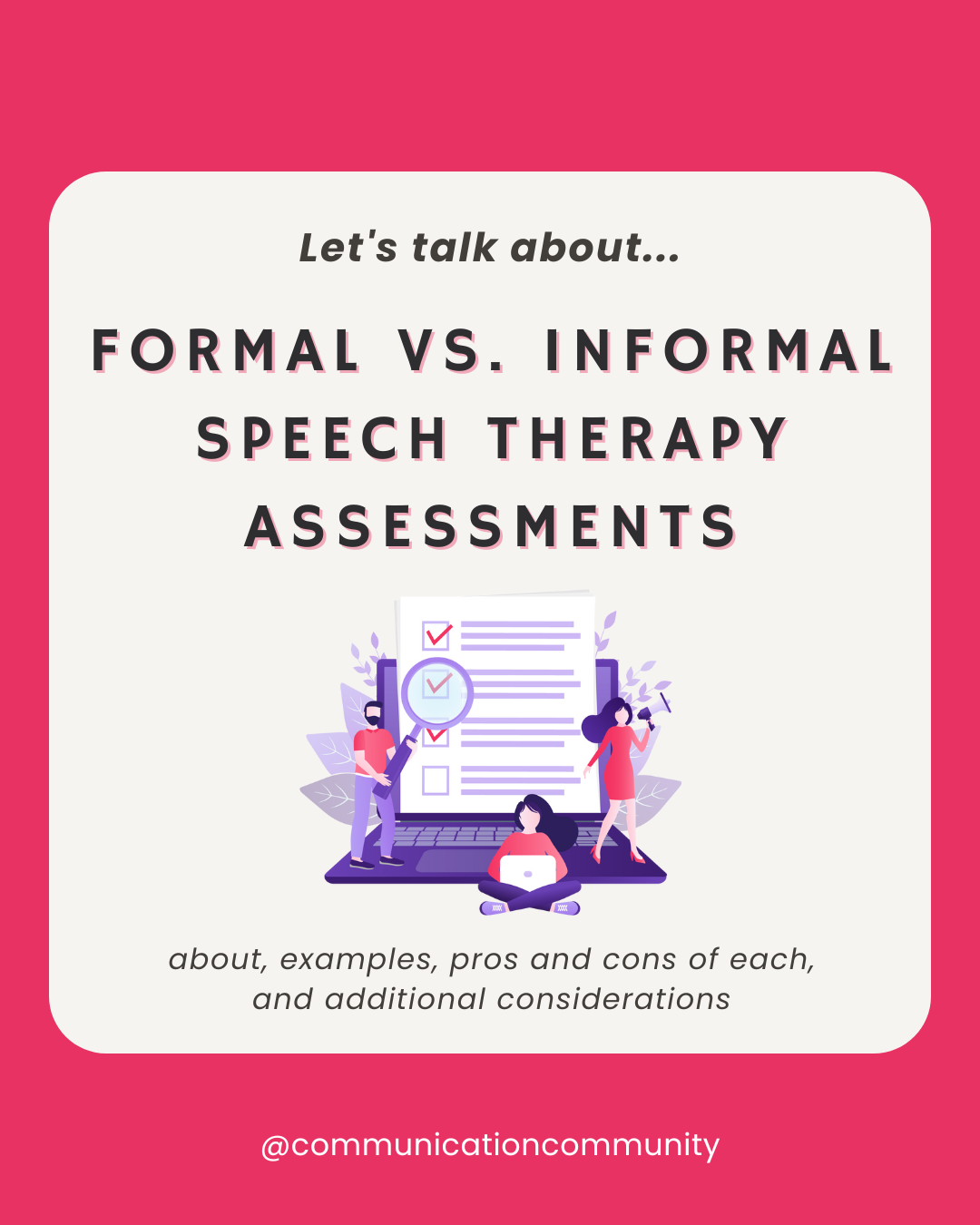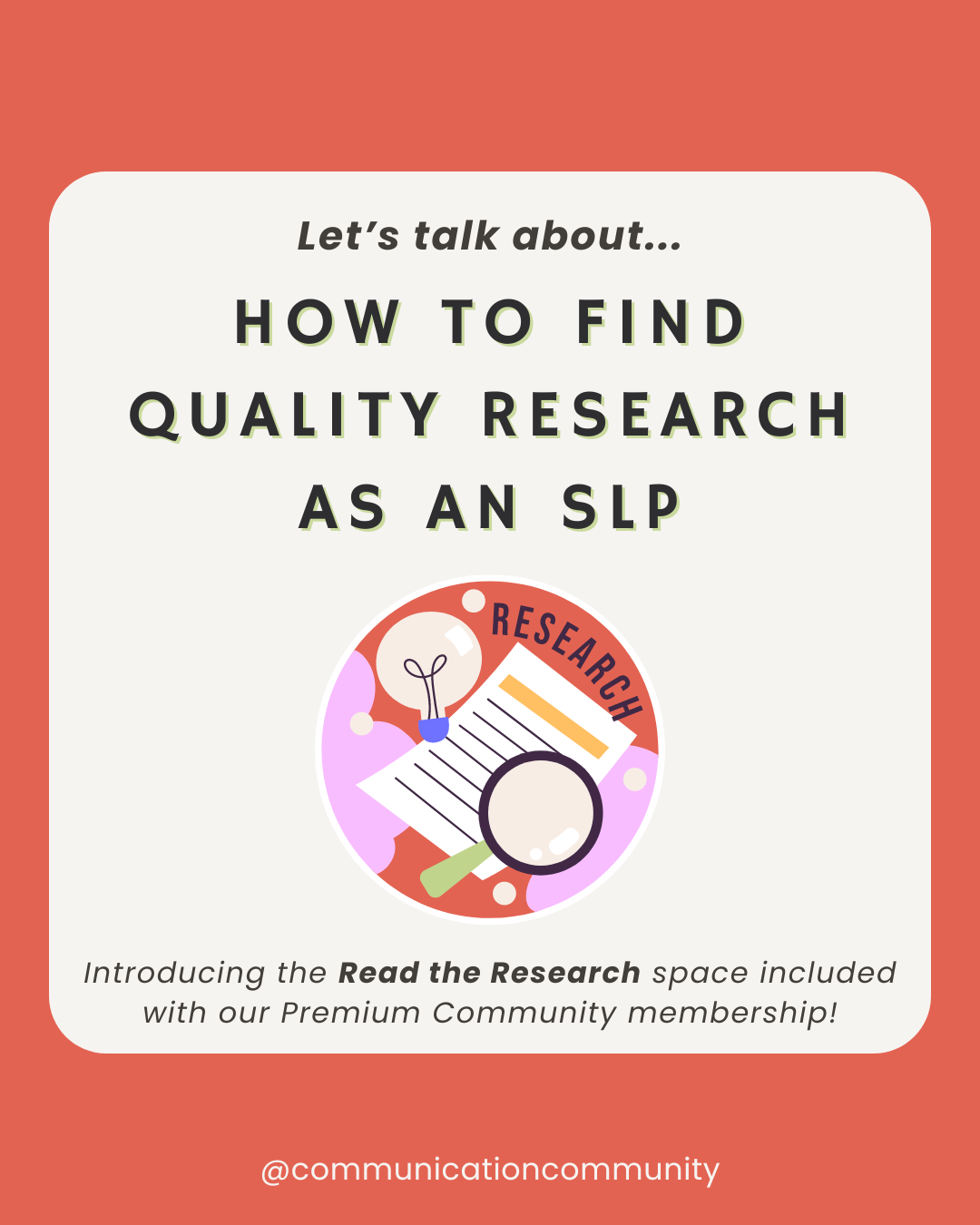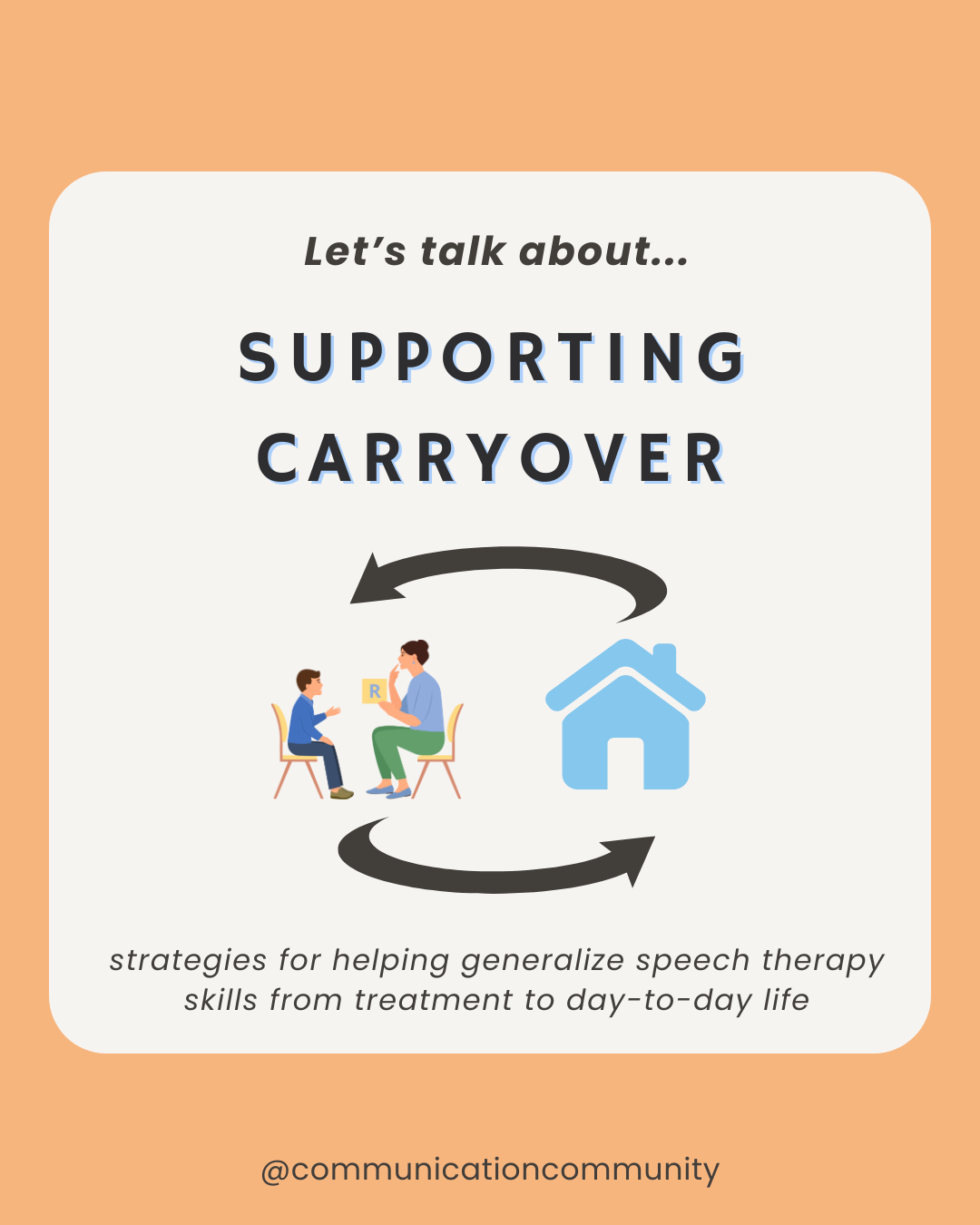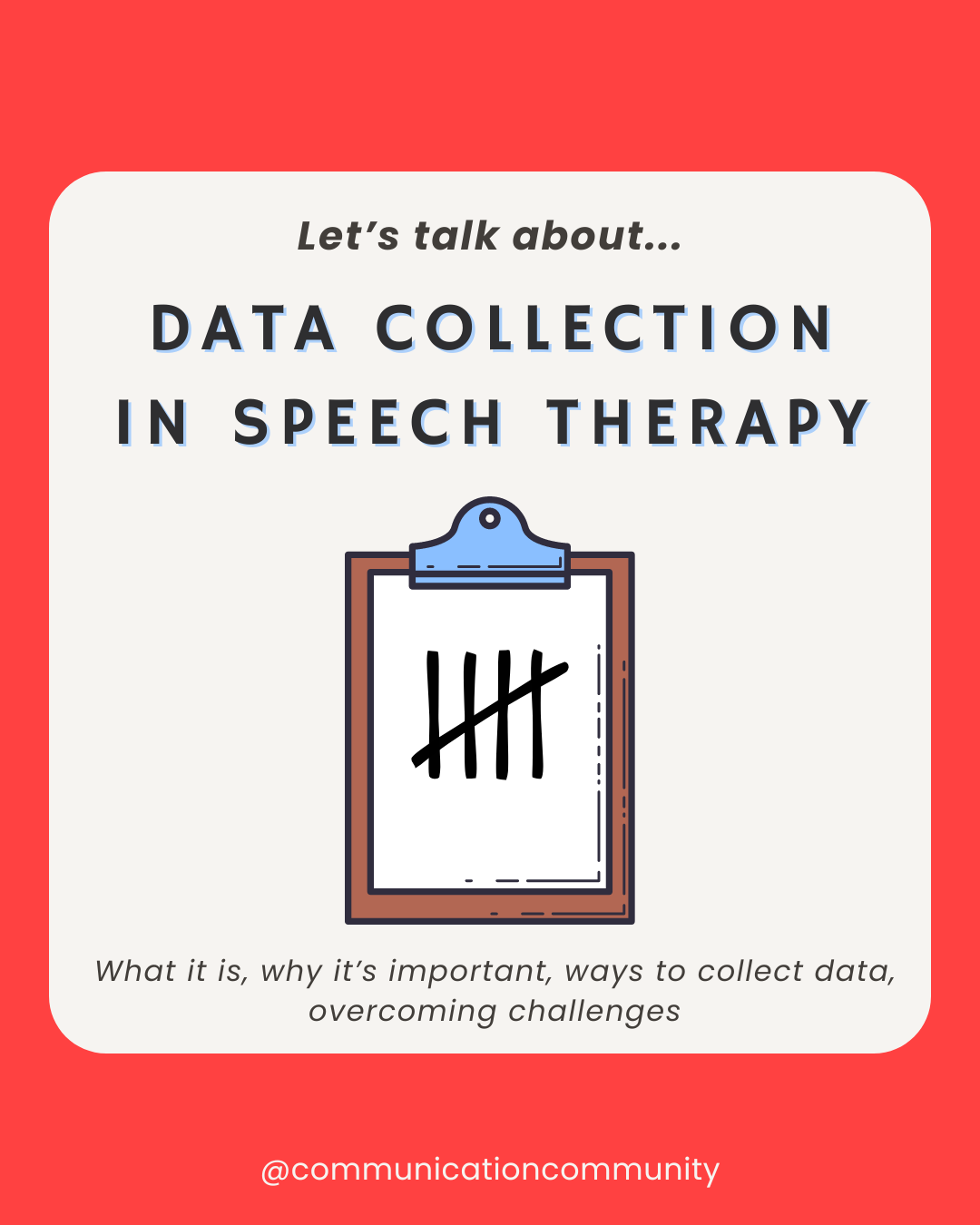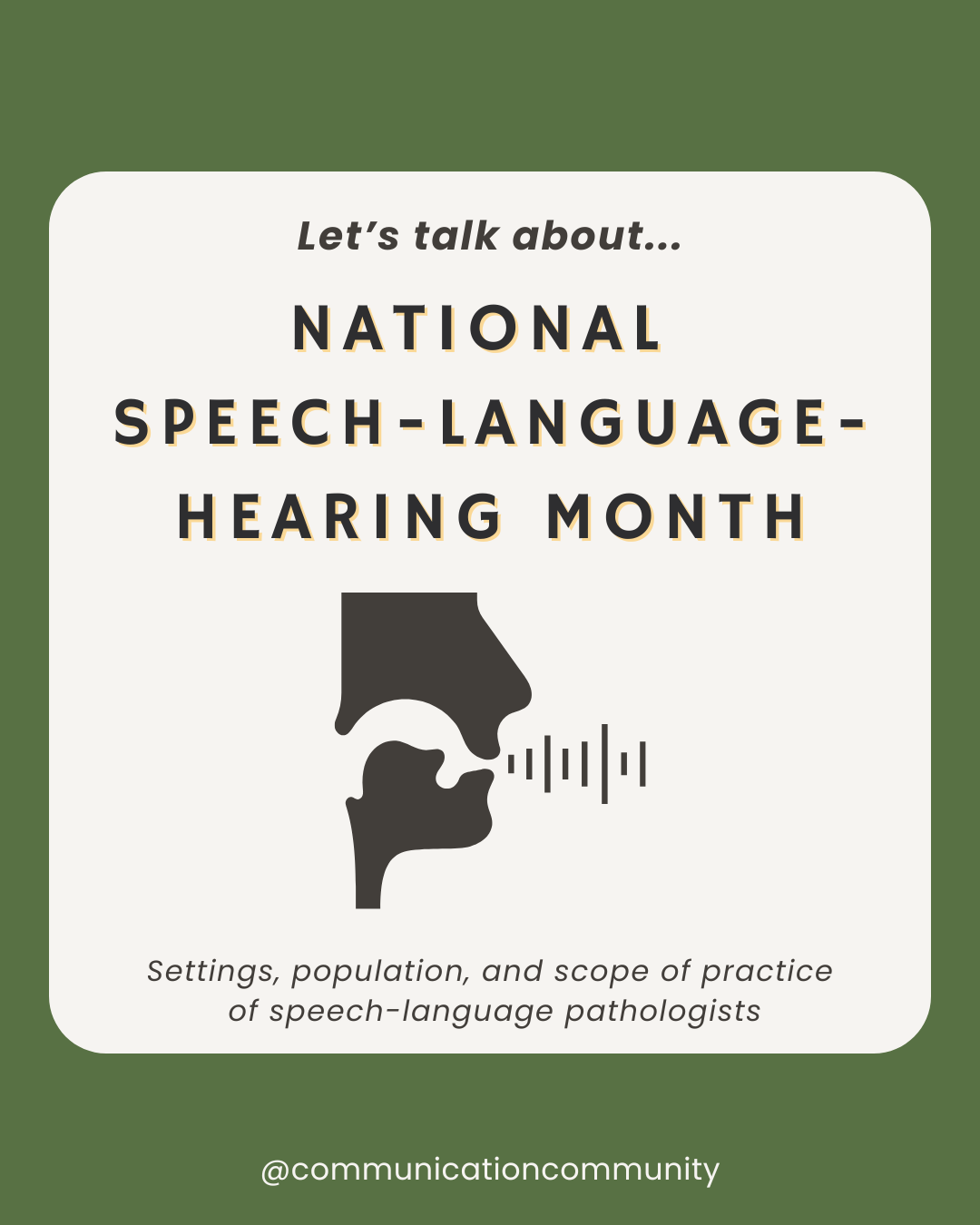In the field of speech-language pathology, assessments are broadly categorized into two types: formal assessments and informal assessments. For clinicians, educators, and parents, it's vital to understand the distinct nuances of each type of assessment to ensure they can be accurately interpreted and yield the most beneficial results for the individuals receiving the speech and language evaluations. Often, it is considered “best practice” for an SLP to obtain data from both assessment types when completing a comprehensive evaluation for the creation of an effective treatment plan. Should this always be the case?
In this article, we will describe and discuss different types of formal and informal assessment measures, the pros and cons of each, as well as considerations when deciding which assessment tools are appropriate for the client being evaluated.
Understanding Formal and Informal Speech Therapy Assessments
Formal speech therapy assessments
Formal assessments are standardized tests that have been scientifically developed and tested. They provide a systematic way to measure an individual's abilities in different areas of speech and/or language. These tests are usually administered under specific conditions (e.g., in a quiet, well-lit room, sitting at a desk) and are scored in a standardized manner. There are two types of formal assessments used in speech-language pathology: (1) norm-referenced assessments and (2) criterion-referenced assessments (or tests).
(1) Norm-referenced tests: These tests are designed to compare an individual's performance to that of a larger, typically representative, group (e.g., a normative sample). These tests are standardized, meaning they have consistent procedures for administration and scoring.
Examples of speech therapy norm-referenced tests include:
- The Clinical Evaluation of Language Fundamentals - Fifth Edition (CELF-5)
- The Peabody Picture Vocabulary Test - Fourth Edition (PPVT - 4)
(2) Criterion-referenced tests: These tests assess an individual's performance against a specific set of criteria or learning standards rather than comparing them to others. These tests focus on what the individual can and cannot do concerning predefined objectives.
Examples of speech therapy criterion-referenced tests include:
- The Functional Communication Profile - Revised (FCP - R)
- The Rossetti Infant-Toddler Language Scale
Note: The examples of formal, standardized tests in this post are for educational purposes only, illustrating various speech-language assessments. We do not endorse or have affiliations with any tests mentioned.
Informal speech therapy assessments
Informal assessments use more flexible tools that can be adapted to the individual's needs. There is a wide range of informal assessments, including observations of the individual in their natural settings (like home or school), speech and language samples, and questionnaires. See a fuller list below. SLPs can use these assessments to understand how the individual being evaluated communicates across everyday routines and activities, which can provide valuable insights that formal tests might not specifically address. Informal assessments can help in identifying specific areas of need and in planning personalized therapy sessions.
Examples of informal speech therapy assessment measures include:
- Clinical observations
- Speech and language samples
- Interviews (including ethnographic interviews)
- Questionnaires
- Checklists
- Dynamic assessments
- Play-based assessments
Pros and Cons of Formal and Informal Speech Therapy Assessments
Formal speech therapy assessments: pros and cons
NORM-REFERENCED TESTS
PROS to norm-referenced (formal) speech therapy assessments may include:
- Objective comparison: Allows for objective measurement and comparison of an individual's performance against a broader population.
- Identification of disorders: Useful in identifying and diagnosing speech and language disorders.
- Eligibility for services: Often required for qualifying individuals for special education or therapy services.
CONS to norm-referenced (formal) speech therapy assessments may include:
- Cultural biases: These may not be suitable for individuals from diverse cultural or linguistic backgrounds. Read more about this later in the article.
- Limited scope: Focuses more on the presence of a disorder rather than functional communication skills.
CRITERION-REFERENCED TESTS
PROS to criterion-referenced (formal) speech therapy assessments may include:
- Tailored goals: Useful for creating individualized educational or therapy plans.
- Functional assessment: More focused on practical, everyday communication skills.
- Flexibility: Can be adapted for various populations and purposes.
CONS to criterion-referenced (formal) speech therapy assessments may include:
- Limited comparability: Not designed for comparing an individual’s performance to a broader population.
- Subjectivity: Some degree of subjectivity in interpreting results, depending on the criteria.
Informal speech therapy assessments: pros and cons
PROS to informal speech therapy assessments may include:
- Personalization: They can be tailored to fit the unique context and needs of each individual.
- Real-world relevance: They tend to offer more insight as to how the individual is functionally using language in their natural environment.
- Reduced pressure: Often, client-led, this informal nature can increase comfortability and ease the pressures of feeling tested, leading to more representative performance.
CONS to informal speech therapy assessments may include:
- Subjectivity: Results can vary based on the evaluator's experience and perspective, affecting the reliability and validity of the information collected.
- Lack of standardization: Comparing results across different settings or over time can be challenging.
Understanding the pros and cons of formal and informal assessments is essential for choosing suitable diagnostic tools and planning effective treatments, ensuring that interventions are tailored to individual needs and backed by evidence.
Assessment Considerations for Specific Populations
Formal or standardized evaluation tools used in speech therapy evaluations are designed to assess various aspects of speech and language disorders consistently and objectively. This ensures that outcomes produce reliable and valid results, as they claim to measure. However, several areas should be considered when interpreting the results of standardized assessments, especially when communicating these results to families:
- Cultural and linguistic diversity: Standardized tests are often developed based on a specific linguistic and cultural population, usually English-speaking populations from Western countries. This can lead to inaccuracies when used with individuals from diverse linguistic and cultural backgrounds. Therefore, tests may not account for different speech patterns (e.g., misjudge a difference for a delay/disorder), vocabulary, and grammatical structures, leading to misdiagnoses or underdiagnoses in these populations.
- Individual differences: The tests might not adequately account for individual variations in language development, speech, and other diagnostic factors (e.g., the client being evaluated is autistic; however, there are no reported autistic individuals part of the normative sample). Factors like age, gender, socio-economic status, and educational background can influence a person's performance on these tests and lend to biases. A standardized test might not be sensitive enough to capture these individual differences, potentially leading to inaccurate information about various skills.
- Testing environment and conditions: The reliability of a test can be compromised by the environment in which it is administered. External factors like noise, distractions, or even the individual’s mood and health on the day of testing can affect their performance. Consistency in test administration is crucial for reliability, but this is not always achievable in real-world settings.
- Test construction and updating: If the standardized test is outdated or not regularly updated, it may not reflect current best practices or recent research findings in the field of speech-language pathology. Also, the test's construction, including the types of questions and the scoring system, can impact its validity and reliability.
- Practitioner expertise and bias: The expertise of the SLP administering the test can influence its outcomes. Inconsistent administration, interpretation of results, and unintentional bias can lead to variability in results.
- Over-reliance on quantitative data: Standardized tests primarily provide quantitative data, which might not capture the qualitative aspects of speech and language disorders. As a result, important nuances and characteristics of an individual's speech and language abilities might be overlooked.
Using Evidence-Based Information to Support Decisions for Assessment
Both formal and informal assessments have their place in speech-language pathology. It is important that whether you are the SLP performing the evaluation or the loved one of the individual participating in one, you are aware of the different results each may provide.
The choice of assessment selection can depend on many factors, including the purpose of the assessment, the characteristics of the individual, and the specific communication disorder being evaluated. Evidence-based practice requires the integration of the best available research with clinical expertise and client preferences.
Additionally, evidence-based decision-making also calls for careful consideration of special populations and deciding if the assessment tools the SLP has chosen yield the most reliable, valid, as well as ethical results. In some cases, standardized evaluation tools compromise the reliability and validity of cultural and linguistic diversity, individual differences, testing conditions, the construction and updating of the test, practitioner expertise and bias, and an over-reliance on quantitative data. These limitations highlight the importance of using a comprehensive and individualized approach to assessment.
References/further resources
- American Speech-Language-Hearing Association. (n.d.). Assessment tools, techniques, and data sources. Retrieved from https://www.asha.org/practice-portal/clinical-topics/late-language-emergence/assessment-tools-techniques-and-data-sources/
- Kearney, T. (2023, January 14). Incorporating Dynamic Assessment to Avoid Standardized Test Pitfalls. The ASHA Leader. Retrieved from https://leader.pubs.asha.org/do/10.1044/leader.scm.28012023.schools-dynamic-assess.30/full/
- Kleiman, L. I. (n.d.). FCP-R: Functional Communication Profile-Revised. Retrieved from https://www.proedinc.com/Products/34040/fcpr-functional-communication-profilerevised.aspx
- Nair, V., Farah, W., & Cushing, I. (July 2023). A Critical Analysis of Standardized Testing in Speech and Language Therapy. Language, Speech, and Hearing Services in Schools, Volume 54 (3), pages 781-793. https://doi.org/10.1044/2023_LSHSS-22-00141
- Pearson Assessments. (n.d.). Clinical Evaluation of Language Fundamentals | Fifth Edition (CELF-5). Retrieved from https://www.pearsonassessments.com/store/usassessments/en/Store/Professional-Assessments/Speech-%26-Language/Clinical-Evaluation-of-Language-Fundamentals-%7C-Fifth-Edition/p/100000705.html
- Pearson Assessments. (n.d.). Peabody Picture Vocabulary Test | Fourth Edition (PPVT-4). Retrieved from https://www.pearsonassessments.com/store/usassessments/en/Store/Professional-Assessments/Academic-Learning/Brief/Peabody-Picture-Vocabulary-Test-%7C-Fourth-Edition/p/100000501.html
- Rossetti, L. (n.d.). The Rossetti Infant-Toddler Language Scale. Retrieved from https://www.proedinc.com/Products/34110/the-rossetti-infanttoddler-language-scale.aspx
- Wisconsin Department of Public Instruction. (November 2021). Criterion-referenced assessments-language. Retrieved from https://dpi.wi.gov/sites/default/files/imce/sped/pdf/sl-criterion-referenced_assessments-language.pdf

